Stairs and Staircases – Building Regulations – Part K
Any building works to homes requires compliance with the building regulations and the Approved Documents set out guidance on how to achieve this.
Part K of the Approved Documents, titled ‘Protection from falling, collision and impact’ covers stairs and staircases.
How steep can stairs be (in a private house)?
Approved Document K sets out maximum and minimum rise and goings of stairs, to make them safe to use. The table below is an extract from Part K of the Approved Documents. It must be read alongside the rest of the Part K document and other Approved Documents.
- The maximum pitch of a private stair is 42°.
- The maximum rise of a private stair is 220mm.
- The minimum going of a private stair is 220mm.
- Note that you cannot combine the max. rise with the min. going as this will be 45°, so would not comply with point 1 (see notes).
- The rise and going rules are the same for tapered treads – refer to 1.25 – 1.27 in Approved document K for further guidance and where to measure the going.
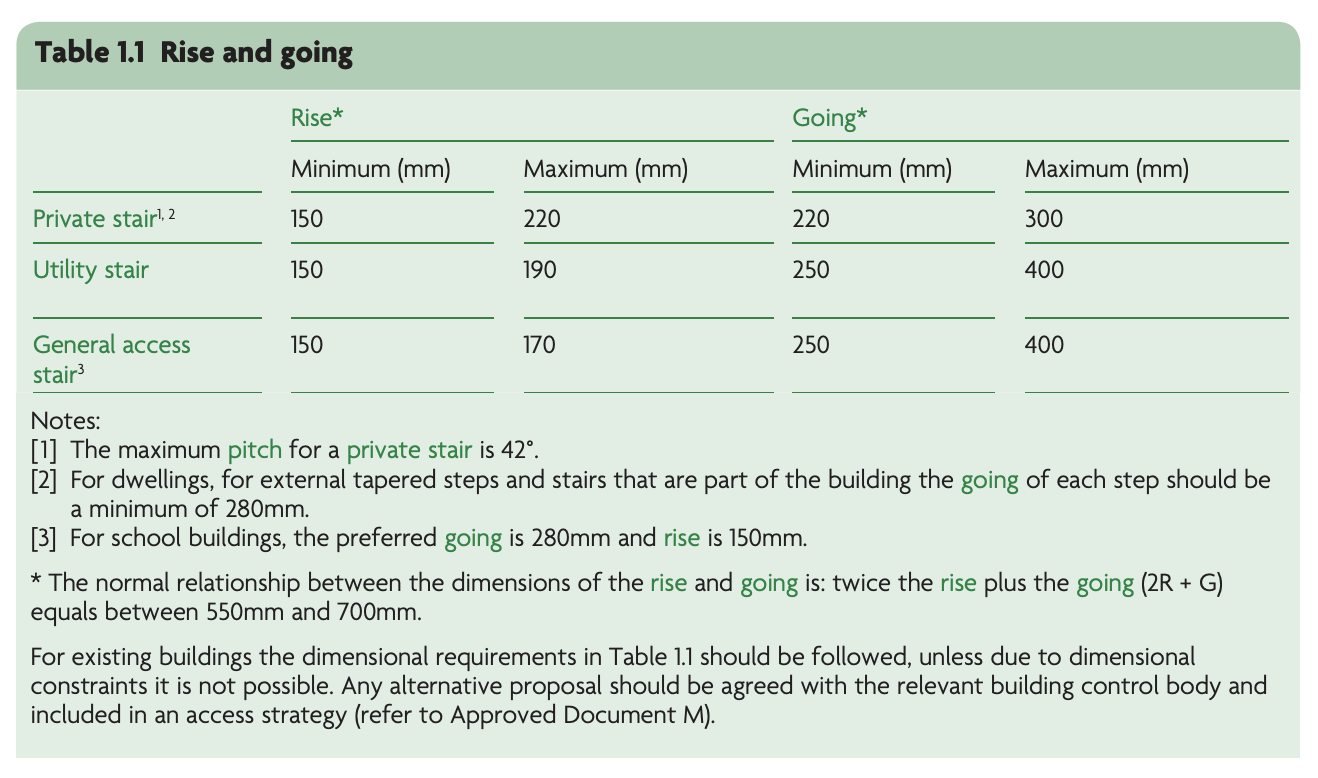
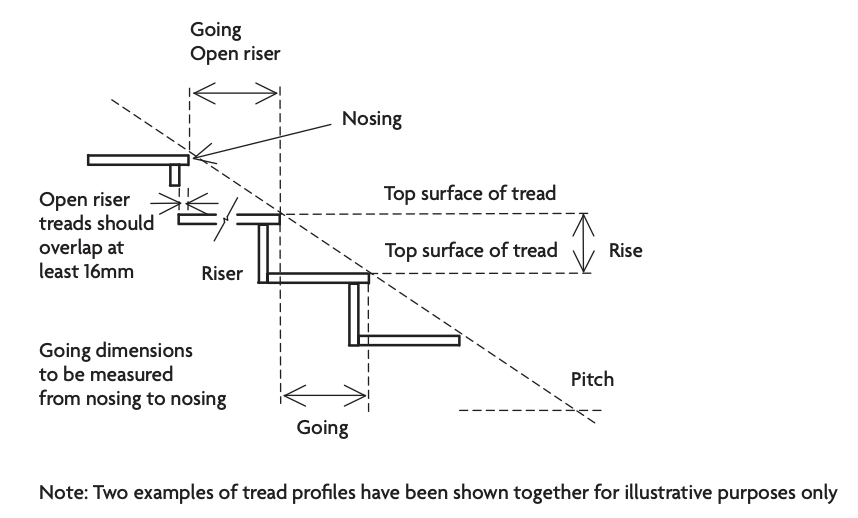
Rules for stairs with open treads – Building Regulations
- Unlike non-domestic buildings, treads in a private house can be open.
- If you choose to have open treads, to meet guidance you must:
- Overlap treads by a minimum of 16mm.
- Ensure that a 100mm sphere cannot pass through.
Minimum stair width in houses – Building Regulations
Where a stepped change of level in an entrance storey is unavoidable, the minimum width of these stairs should be 900mm.
Maximum number of stairs in a flight (private houses)
If a flight of stairs has more than 36 steps, there should be a change of direction between flights at an angle of at least 30°. See diagram below, from Approved Document K. Again, as with all information in this article, this diagram should be read alongside the rest of the Part K document and other Approved Documents.
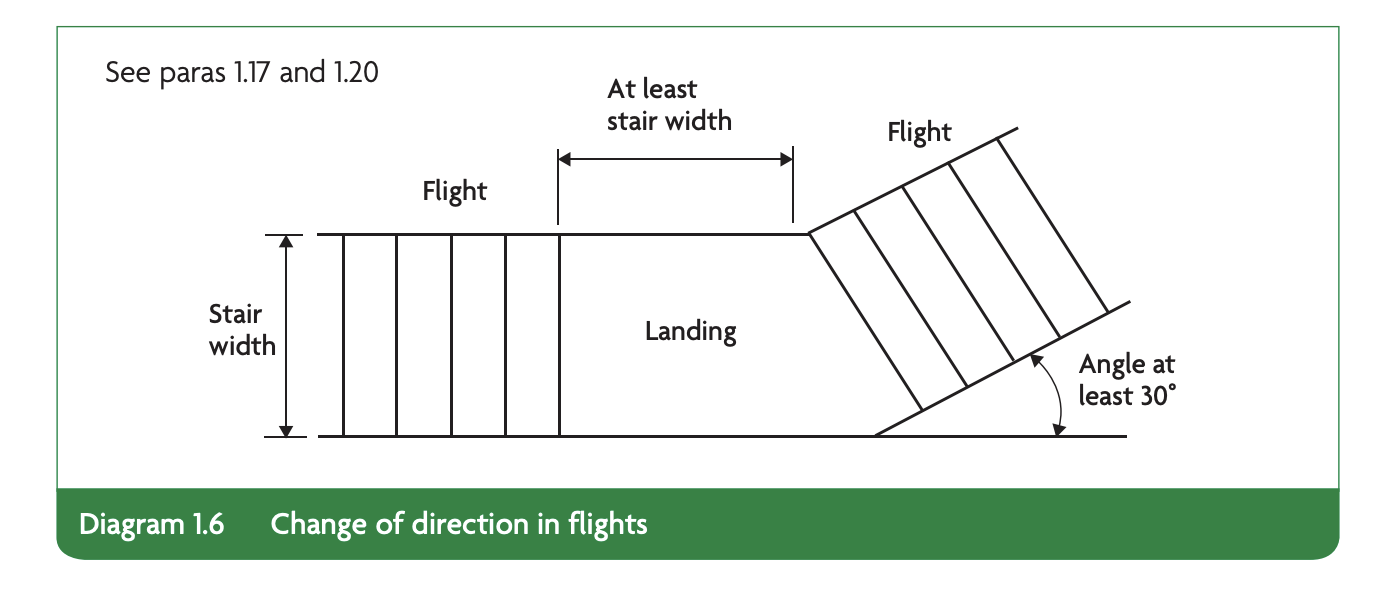
Minimum ceiling height above stairs – Building Regulations
As discussed in our article, What is the Average and Minimum Ceiling Height in a House?, there is no minimum room height defined by the Building Regulations, but there are rules around ceiling heights above staircases and access:
Part K of the Building Regulations advises that the head height for landing and stairs should be at least 2m as shown in the diagram below (from Approved Document K):
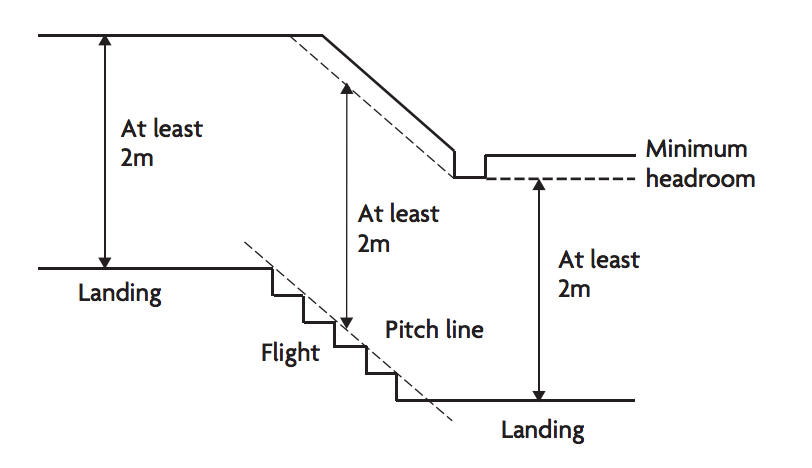
There’s a handy exception to this rule for loft conversions:
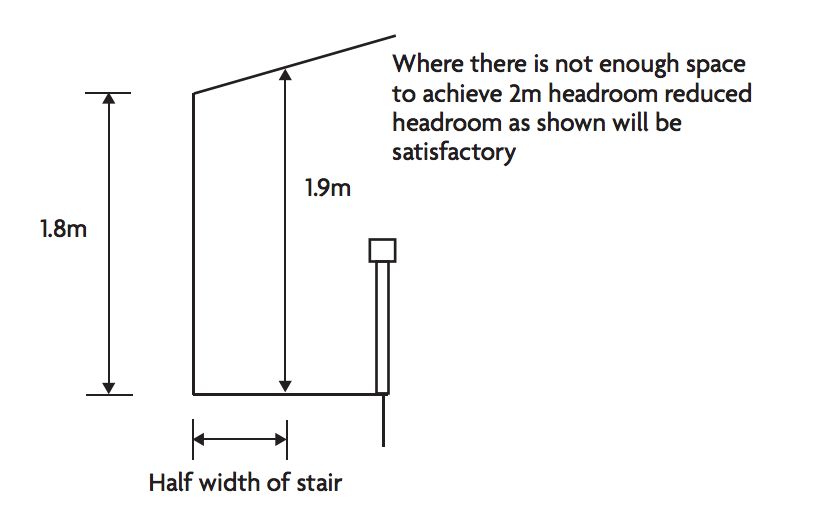
Minimum landing sizes in private houses – Building Regulations
‘At the top and bottom of every flight, provide landings the width and length at least as great as the smallest width of the flight.’ See 1.2-1.24 Landings in Approved document K.
- A landing may be part of the floor of the building.
- A landing should be clear of permanent obstructions.
- It is acceptable to have cupboard doors at the top of a flight but there are restrictions – see 1.21 in Approved Document K.
- A door may swing into a landing at the bottom of a flight but there are restrictions – see 1.24 in Approved Document K.
Can you use a ladder for a loft conversion?
You should not use retractable ladders as means of escape for a loft conversion (Approved document B) but you may use a fixed ladder with fixed handrails both sides if both the following apply:
- the loft conversion contains only one habitable room.
- there is not enough space without alteration to the existing space for a stair that satisfies the guidance for dwellings in paragraphs 1.2-1.24 regarding landings in Approved document K.
Spiral staircases
Approved document K gives guidance in 1.28 to design spiral and helical stairs in accordance with BS-5395 part 2.
Approved Document B – Volume 1 Dwellings (protected stairway)
Approve document B deals with fire safety. When it comes to staircases, there are particular rules about providing a ‘protected stairway’ to ensure the occupants can escape safely in event of a fire. Refer to section 2: Means of escape – dwellinghouses for more details about how to comply.
How to find an architect for your building control application
Information contained in this article is for general information only. You architect can help you to navigate the compliance with the Building Regulations and the best way to gain Building Regs approval for your particular project.
Design for Me helps homeowners find the best residential architects for their home building or renovation projects, all over the UK.
Once you register your project, we’ll match it with the best architects in your area and beyond, and you can see who may be available and eager to work on your project straight away.
- Quickly see who’s interested in your job.
- Create a shortlist.
- Invite up to three for a no-obligation consultation.
Emily Design for Me
